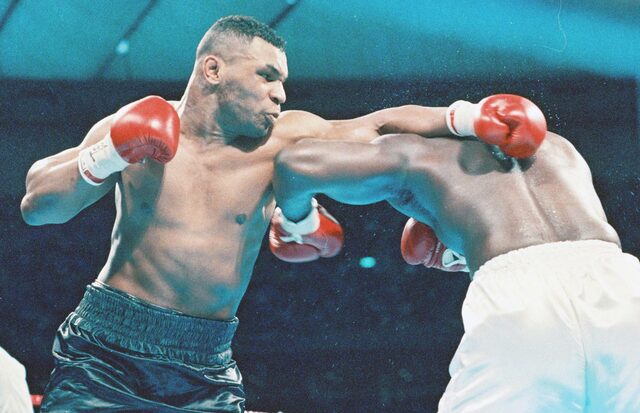
Kendo requires high standards not only in terms of technique, but also in the environment in which the matches are held.
The size of the court, in particular, is extremely important to ensure the fairness and safety of the game.
This article details the exact dimensions of a kendo court, how to install it, and how it affects the practice of kendo.
By providing useful information not only for international competitions, but also for local tournaments and dojo practice, we will help all Kendo enthusiasts hone their skills in a better environment.
This article will take a deep dive into how to set up a kendo court and what standards you should pay attention to.
目次
- 1 Introduction: Why kendo court size is important
- 2 International dimensional standards for kendo coats
- 3 Space and environmental requirements when installing courts
- 4 Kendo court markings and their meanings
- 5 How to make a kendo coat at home or dojo
- 6 Frequently asked questions and answers (FAQ)
- 7 Summary: Utilize your knowledge of Kendo court sizes
Introduction: Why kendo court size is important

International dimensional standards for kendo coats
International Kendo competitions are held according to uniform rules and standards.
This includes the dimensions of the court, which must ensure not only the skill of the players but also the fairness of the playing environment.
Court size used in official matches
According to the International Kendo Federation (FIK), the standard kendo court used in international competitions is 11 meters long and 14 meters wide.
This size is intended to provide the minimum amount of space required for official competitions between adult men and women, ensuring appropriate distance and ease of movement.
Each side of the court is clearly marked with white lines to prevent players from leaving the court during the match.
Differences from practice courts
Practice courts are allowed a little more flexibility than courts used for official games.
For example, due to space constraints in the practice environment or dojo, the size of the court may be reduced slightly.
However, it is recommended that adjustments be made within the range that does not impede technical improvement.
Practice courts are usually set at around 10 meters long and 12 meters wide, which allows for effective training, but please be aware that this is different from the international standard court size. is needed.
Adhering to these standards not only improves kendo technique, but also improves the fairness and safety of match management.
The next section details the space and environmental requirements when installing a kendo court.

Space and environmental requirements when installing courts
Appropriate space and environment are required to set up a Kendo court.
This includes not only the size of the court itself, but also the clearance around it to ensure player safety.
Required space and surrounding clearance
The standard dimensions of a kendo court are 11 meters long and 14 meters wide, but in order for athletes to play safely, allowances must be made outside these dimensions.
It is generally recommended to have at least 2 meters of clearance around the court.
This reduces the risk of players getting injured when they step off the court, and provides a safe environment for referees and spectators to watch the game.
Considerations for indoor and outdoor installations
Kendo courts are generally installed indoors, but they may also be installed outdoors.
For indoor installations, consideration must be given to the flooring material, lighting, and ventilation systems to ensure that they do not affect player performance.
In particular, flooring materials must have appropriate cushioning properties, making it difficult for players to slip, and preferably being flexible.
For outdoor installations, weather effects must be considered.
Measures must be taken to ensure drainage during rainy weather and to minimize the impact on athletes from excessive heat from direct sunlight.
It is also important to consider harmony with the surrounding environment and ensure that there are no visual hindrances.
By properly managing these requirements, the kendo court becomes the optimal playing field for athletes, allowing them to improve their technique and safely manage the match.
In the next section, we will discuss in detail the markings on the Kendo court and their meanings.

Kendo court markings and their meanings

How to make a kendo coat at home or dojo
Making your own Kendo coat at home or at your dojo will greatly help improve your practice environment.
If you have the appropriate space, it is possible to set up your own Kendo court.
Below, we will explain the steps to make a DIY kendo coat, as well as the necessary materials and tools.
Steps to make a DIY Kendo coat
-
Space measurement and planning : Measure the installation space based on the standard dimensions of the kendo court (11 meters long and 14 meters wide). If you don’t have enough space, you can scale it down, but aim for a size as close to the standard as possible to ensure a minimum of freedom of movement.
-
Selection and preparation of flooring materials : It is important to choose flooring materials for kendo courts that are non-slip and shock absorbing. Tatami or dedicated sports floor mats are suitable. Purchase flooring material and cut it to fit the installation space.
-
How to draw the lines : Use white or yellow tape to draw the boundaries of the court. Choose a tape with strong adhesive strength to firmly fix it to the floor. You could also consider painting the lines if you wish, but this would be a more permanent solution.
-
Ensuring safety around the court: A safety area of at least 2 meters will be secured around the court to ensure the safety of players when they step outside the court. Additionally, installing cushioning material on the walls will reduce the impact.
-
Final Installation Check : Once all installations are complete, double check the entire court. In particular, we carefully check the fixation of flooring and the accuracy of lines, and make appropriate adjustments where necessary.
Materials and tools needed
- Flooring material (Tatami or sports floor mat)
- Marking tape (white or yellow)
- Cutter or scissors (for cutting materials)
- Measure (for accurate measurements)
- Cushion material (for wall installation)
- Adhesive or nails (for fixing flooring)
By following these steps to design and install the right kendo court for your home or dojo, you can create a practice environment that is accessible on a daily basis.
This makes it possible to minimize the time and location constraints required to improve Kendo techniques.
In the next section, we will answer more specific questions through Frequently Asked Questions (FAQ).

Frequently asked questions and answers (FAQ)
Many beginners and dojo managers frequently ask questions regarding the installation and size of kendo courts.
Here are some frequently asked questions and answers related to coat size.
Answers to common questions about coat sizes
Q1: What is the standard size of Kendo coat?
A1: The standard size of a Kendo court is 11 meters long and 14 meters wide. This is the official size for international competitions for adults, and is also used in many domestic competitions.
Q2: Can I install a Kendo court even in a small space?
A2: Yes, even if there is a space restriction, the Kendo court can be set up in a smaller size. However, to maximize the effectiveness of your practice, it is recommended to use as much space as possible to allow for ease of movement.
Q3: What should I pay attention to when changing the coat size?
A3: When resizing a court, the most important thing is to ensure there is enough space for players to move safely. Kendo movements in particular involve a wide range of movements, so if the court is too narrow, it can reduce the accuracy of techniques and increase the risk of injury.
Precautions when using a non-standard coat size
Q4: Are there any specific precautions when using a non-standard coat size?
A4: When using non-standard sizes, please pay special attention to the following points:
- Ensuring safety : If the court is smaller than standard, it is easier for players to come into contact with each other. If you don’t have enough space, you should adjust the intensity of your practice and prioritize safety.
- Adaptation to the rules : Even when using non-standard courts for practice purposes rather than official matches, it is important to continue to respect the basic rules and etiquette of Kendo.
These FAQs provide clear answers to common questions about Kendo courts and help you practice and compete in the right environment.
The next section details how you can use your court size knowledge to your advantage.

Summary: Utilize your knowledge of Kendo court sizes
In Kendo, understanding court size and utilizing it appropriately plays an important role in improving technique and preparing for matches.
Here we explain why the correct size of the court contributes to improved technique, and how to deal with the differences in environments between international and local matches.
Why accurate court size contributes to improved technique
In Kendo, movement within proper space is important.
By practicing on the correct court size, players can hone their skills under conditions that simulate a real game environment.
This is directly connected to improving your sense of distance, accuracy of techniques, and positioning when defending.
Additionally, proper distance and timing are the keys to success in Kendo, and practicing on a standard court size is essential to developing those skills.
Prepare for the differences between international and local matches
Kendo competitions include both international and local competitions, each with different scale and rules.
International matches typically have strict standardized court sizes, so it’s important to familiarize yourself with the environment.
On the other hand, for local matches, the court size may vary depending on the location.
In order to cope with this, it is effective to practice on courts of various sizes and acquire the flexibility to adapt to any environment.
Appropriately understanding the size of the court in Kendo and applying it in practice not only improves technique, but is also one of the factors that determines performance in matches.
Those who seriously pursue Kendo are encouraged to deepen their knowledge and practice in an appropriate environment at all times.




